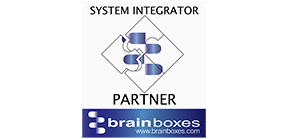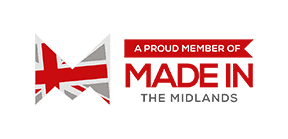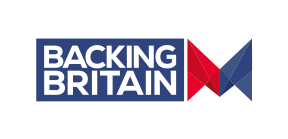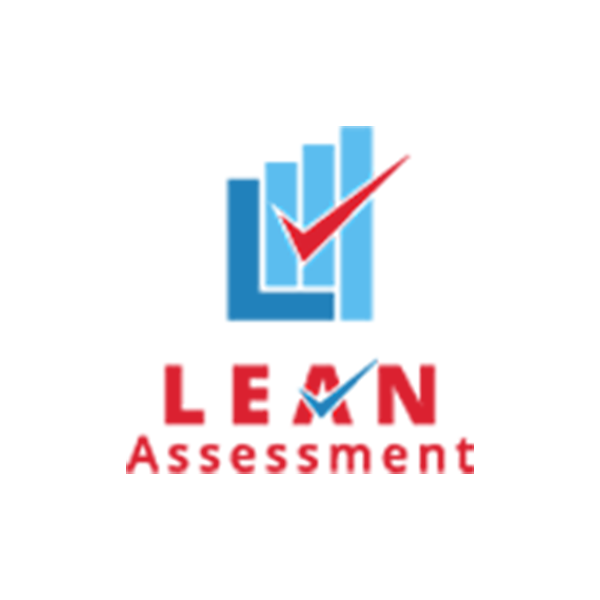What is Lean Methodology?
- By Brett Griffiths
- Lean Technology
- July 09 , 2024
- Share
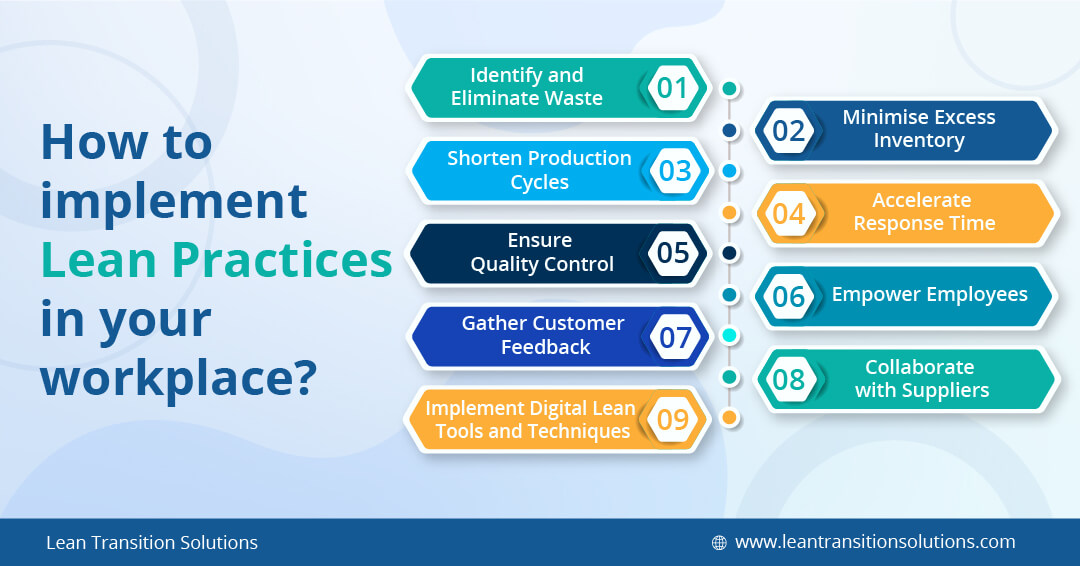
Many successful companies around the globe have already implemented Lean Methodology to save time, increase productivity, and reduce operational costs! Lean Methodology was initially developed as part of the Toyota Production System in the mid-20th century and is a systematic approach aimed at enhancing business efficiency through waste reduction and continuous improvement. This methodology focuses on maximising value for customers while minimising waste or "Muda", thus optimising all processes and resources involved. This blog provides an in-depth understanding of Lean Methodology, shedding light on lean manufacturing principles and explaining how manufacturers across various industries can effectively apply lean activities to various operational processes to improve business efficiency substantially.
What is Lean Methodology?
Lean Methodology is a systematic approach to improving efficiency and effectiveness in business operations by identifying and eliminating waste, thereby increasing value to the customer. Over time, Lean manufacturing has evolved to encompass a broader set of lean principles emphasising continuous improvement and waste reduction. These principles were formalised by Toyota Motor Corporation in 2001 after decades of research into the Toyota Production System. So, the organisational culture at Toyota, or the "Toyota Way", serves as a model for other organisations seeking to adopt Lean practices.
Lean Methodology helps create more value with fewer resources by optimising workflows and minimising activities that do not add value to the end product or service. This involves continuous improvement, ensuring that every aspect of the business operation is as efficient and effective as possible.
The 5 principles of Lean Methodology include :
1. Value : Define value from the customer's perspective.
2. Value Stream : Map out all the steps in the value stream and eliminate those that do not create value.
3. Flow : Ensure that value-creating steps flow smoothly without interruptions.
4. Pull : Only producing what the customer needs, reducing overproduction and inventory. (Kanban)
5. Perfection : Continuously strive for perfection by removing waste and improving processes. (Kaizen)
Lean Methodology is widely applicable across various industries, including manufacturing, healthcare, software development, and service industries, providing a robust framework for enhancing operational efficiency and driving business success.
Lean Tools and Techniques for improving Production Processes
Lean manufacturing processes systematically focus on minimising waste without sacrificing productivity. These tools and techniques collectively enable lean manufactures to reduce waste, improve efficiency, and enhance product quality. Implementing these lean methods can significantly improve manufacturing processes and overall organisational performance.? Here is a comprehensive list of key lean manufacturing tools and techniques, each accompanied by a detailed description:
1. 5S software : The 5S system (Sort, Set in Order, Shine, Standardise, Sustain) helps workplace organisations enhance efficiency by eliminating waste, improving flow, and reducing process variability.
2. Kanban software : Kanban is a scheduling system that uses visual signals to control the manufacturing production process. It helps manage workflow efficiently by reducing workload and process inefficiencies.
3. Tcard Software : Tcard software is a visual management tool that tracks tasks and workflows in real-time. It can visually represent the status of tasks and processes, facilitating better communication and quicker response to issues.
4. Balanced Scorecard Software : Balanced Scorecard software (BSC) helps organisations track and manage their strategic performance. Scorecards align business activities with the organisation's vision and strategies, improves internal and external communications, and monitors organisational performance against strategic goals.
5. CMMS Software (Computerised Maintenance Management System) : CMMS system maintains a computerised database of information about an organisation's maintenance operations. It helps schedule, plan, track, and optimise maintenance activities, ensuring minimal downtime and extending equipment life.
6. Visual Management Boards : Visual management boards are customisable tools that display real-time critical metrics and Key Performance Indicators (KPIs). These boards can be tailored to track various metrics such as SQDCP (Safety, Quality, Delivery, Cost, People), SQDCM (Safety, Quality, Delivery, Cost, Morale), SQDIP (Safety, Quality, Delivery, Inventory, Productivity), ESQDCP SQCPL, EQDCPS, SheQCPLDCPS (Safety, Health, Environment, Quality, Cost, Productivity, Logistics, Delivery, Customer, People, and Service) and many more.
7. Hoshin Kanri X-Matrix (Policy Deployment) : Hoshin Kanri is a strategic planning methodology used to ensure that the goals of a company drive progress and action at every level within that company. It aligns the strategic goals with daily management.
8. Kaizen : Kaizen, meaning "continuous improvement," involves all employees working together to achieve regular, incremental improvements to the manufacturing process.
9. Gemba : Gemba, meaning "the real place," refers to the actual place where value is created. Gemba walks involve managers visiting the shop floor to observe the process, engage with employees, and identify opportunities for improvement.
10. Heijunka : Heijunka, or production levelling, is the practice of smoothing out production schedules by reducing uneven workload, thereby improving productivity and efficiency.
11. Poka-Yoke : Poka-Yoke, or mistake-proofing, involves implementing simple devices or mechanisms to prevent errors by making it impossible to perform a process incorrectly.
12. Jidoka : "Automation with a human touch" or Jidoka empowers workers to stop production when a problem is detected, ensuring that defects do not pass through the production process.
13. SMED (Single-Minute Exchange of Die) : SMED focuses on reducing changeover times in production processes to under ten minutes. It helps in achieving more flexible and responsive manufacturing.
14. Andon : Andon is a visual management system that uses lights or signals to indicate the status of production processes, alerting workers and managers to immediate issues.
15. Yamazumi Chart : A Yamazumi board is a visual tool that helps balance workload by stacking tasks in a chart. This stacked bar chart makes it easier to see where bottlenecks occur and how to redistribute work.
16. Cellular Manufacturing : Cellular manufacturing arranges production workstations in a U-shaped or similar configuration to enhance the flow of materials and reduce transportation waste.
Benefits of Lean Methodology implementation
Implementing Lean Methodology in organisations, particularly those aiming to become Lean organisations, offers substantial benefits across various facets of operations. By integrating Lean production processes and leveraging Industry 4.0 solutions, these organisations can significantly improve efficiency, quality, and competitiveness. Here are the key benefits of implementing Lean Methodology :
- Enhanced Efficiency : Lean Methodology focuses on eliminating waste and optimising processes, leading to streamlined operations and reduced lead times.
- Improved Product Quality : By standardising processes and reducing variability, Lean method helps consistently deliver high-quality products that meet customer expectations.
- Cost Reduction : Lean principles help minimise inventory, reduce overproduction, and optimise resource utilisation, thereby lowering operational costs.
- Increased Flexibility and Responsiveness : Lean organisations are better equipped to respond quickly to changes in customer demand and market conditions due to their agile and adaptable operational framework.
- Employee Engagement and Empowerment : Lean approach encourages a continuous improvement culture where employees actively identify and implement process enhancements.
- Enhanced Customer Satisfaction : Lean solutions can enhance overall customer satisfaction by improving product quality, shortening lead times, and improving responsiveness.
- Improved Safety : Lean methodologies often lead to cleaner, more organised work environments, which can improve workplace safety and reduce accidents.
- Sustainable Growth : Lean organisations lay a foundation for sustainable growth and success by continuously improving manufacturing processes and eliminating waste.
How to implement Lean Practices in your workplace?
Implementing lean practices in your workplace can significantly improve efficiency, productivity, and overall business performance. Integrating these lean practices into your workplace can achieve a more efficient, responsive, and customer-focused organisation. Remember to continuously review and refine your processes to maintain a culture of continuous improvement. Below are key steps to achieve a lean environment, including integrating digital lean tools and techniques.
1. Identify and Eliminate Waste
Identify and remove non-value-added activities within your processes. It includes excess motion, waiting times, overproduction, defects, and redundant processes. Utilise techniques such as Value Stream Mapping to pinpoint areas of waste and streamline operations.
2. Minimise Excess Inventory
Implement Just-In-Time (JIT) inventory systems to ensure materials and products are only acquired when needed. This reduces storage costs, minimises obsolescence, and improves cash flow. Regularly review inventory levels and adjust based on demand forecasting.
3. Shorten Production Cycles
Focus on reducing the time it takes to complete a product from start to finish. Analyse each step in the production process and look for bottlenecks or inefficiencies. Techniques like continuous flow and cellular manufacturing can streamline workflows and decrease cycle times.
4. Accelerate Response Time
Enhance your organisation's ability to respond quickly to customer demands and market changes. Implement agile methodologies to improve flexibility and reduce delays. Use real-time data analytics to make informed decisions swiftly.
5. Ensure Quality Control
Integrate quality control measures throughout production to ensure all components meet the required standards. Utilise techniques such as Six Sigma to reduce variability and defects, enhancing overall product quality and customer satisfaction.
6. Empower Employees
Empower your employees and provide them the authority to make decisions and improvements within their roles. Encourage a continuous improvement culture where employees are motivated to identify and solve problems. Provide training sessions and development opportunities to enhance their skills.
7. Gather Customer Feedback
Regularly seek feedback from your customers to know their needs and expectations. Use this information to drive improvements in your products and services. Implement tools like customer surveys and focus groups to gather actionable insights.
8. Collaborate with Suppliers
Cooperate closely with your suppliers to ensure that they follow your lean practices. Develop strong relationships and collaborate on process improvements. Share information and resources to optimise the supply chain, reduce lead times, and improve quality.
9. Implement Digital Lean Tools and Techniques
Use software solutions for real-time monitoring, data analysis, and process automation. Also, implement tools like Enterprise Resource Planning (ERP) systems and Manufacturing Execution Systems (MES) to enhance operational efficiency and decision-making.
Overcoming Challenges in implementing Lean Methodology
Implementing lean methodology can be highly beneficial, but organisations often face several challenges during the process. Here are some common challenges, along with strategies to address them :
1. Resistance to Change
Employees may resist changes due to fear, comfort with existing processes, or concerns about increased workload. Communicate the benefits of lean clearly and involve employees in the transition process. Provide training and support to ease the adoption of new practices.
2. Lack of Management Support
Successful lean implementation requires strong commitment and support from top management. Ensure leadership is fully committed to lean principles and actively participates in lean initiatives. Leadership should lead by example and allocate necessary resources.
3. Inadequate Training and Knowledge
Employees may lack the necessary knowledge and skills to implement lean effectively. Invest in comprehensive training programs that cover lean principles, tools, and techniques. Ongoing education and professional development are crucial for sustaining lean practices.
4. Cultural Barriers
The organisational culture may not be aligned with lean values such as continuous improvement, waste reduction, and employee empowerment. Foster a continuous improvement culture that values and encourages employees to identify and solve problems. Recognise and reward contributions to lean initiatives.
5. Poor Communication
Ineffective communication can lead to misunderstandings, confusion, and lack of coordination among teams. Establish clear communication channels and regular updates to inform everyone about lean initiatives, progress, and successes. Use visual management tools to enhance transparency.
6. Insufficient Resources
Lack of resources such as time, money, and personnel can hinder lean implementation. Prioritise lean initiatives and allocate adequate resources to ensure successful implementation. Consider starting with small, manageable projects to demonstrate value and gain momentum.
7. Sustaining Momentum
Initial enthusiasm for lean can wane over time, leading to momentum loss and regression to old habits. To keep lean initiatives fresh and engaging, set short-term goals, celebrate achievements, and continuously seek new areas for improvement. Establish a system for regular review and feedback.
8. Balancing Lean with Daily Operations
Integrating lean practices with day-to-day operations without disrupting productivity can be challenging. Implement lean gradually and integrate changes incrementally. Use pilot projects to test and refine lean processes before full-scale implementation.
9. Measuring Success
Difficulty in measuring the impact of lean initiatives can make it hard to demonstrate success and justify continued investment. Develop clear performance metrics along with Key Performance Indicators (KPIs) to track real-time progress and measure the impact of lean initiatives. Regularly review these metrics to assess effectiveness and make necessary adjustments.
10. Misalignment with Organisational Goals
Lean initiatives may not align with the organisation's overall strategic goals, leading to conflicts and inefficiencies. Ensure that lean objectives are aligned with the organisation's strategic goals. Involve senior leadership in aligning lean projects with the company's broader vision and mission.
Lean Implementation Example: How TRP Sealing Systems Enhanced Efficiency with LTS?
TRP Sealing Systems recognised the need to enhance efficiency and productivity within their factory, prompting a transformative journey into Lean Methodology.
They previously depended on manual methods and paper-based spreadsheets alongside their ERP system and realised the limitations of these traditional approaches. Recognising the need for change, they partnered with Lean Transition Solutions Ltd. to integrate digital lean management tools.
Implementing solutions like the Digital T Card System and Janus Data Capture marked a significant operational shift for TRP. The Digital T Card System automated work order allocation, optimising production planning and execution through real-time insights.
Janus Data Capture Software provided comprehensive insights into TRP's manufacturing processes, empowering them to eliminate non-value-added activities and make informed, data-driven decisions—a cornerstone of lean transformation.
The Data Point Balanced Scorecard enabled TRP to visualise strategic objectives, monitor Key Performance Indicators (KPIs), and align their workforce with predefined goals, fostering a culture of continuous improvement.
TITAN CMMS further supported TRP's Total Productive Maintenance (TPM) goals, enabling streamlined maintenance request creation and tracking to enhance OEE.
Additionally, leveraging the Saisho 5S audit and assessment app allowed TRP to monitor performance systematically and drive ongoing enhancements aligned with their lean transformation objectives.
By embracing digital lean manufacturing tools and software solutions, TRP Sealing Systems optimised shop floor operations, increased productivity, and achieved an overall lean transformation, positioning them amidst global manufacturing companies that achieved efficiency and productivity.
Watch “How TRP Sealing Systems achieved Lean Transformation Excellence with LTS?“
Lean methodology and practices offer a transformative approach for organisations aiming to enhance efficiency, reduce waste, and foster a culture of continuous improvement. Organisations can streamline their processes, improve product quality, and deliver greater customer value by systematically identifying and eliminating non-value-added activities.
Integrating lean principles optimises operational performance and engages employees at all levels, empowering them to contribute to ongoing improvements and innovations. As organisations navigate the complexities of modern business environments, adopting lean methodology can serve as a cornerstone for sustainable success and competitive advantage.
Manufacturers, in particular, gain significantly from embracing lean practices and principles. The manufacturing sector, characterised by intricate supply chains and high production volumes, can benefit from the efficiency and waste reduction that lean methodologies bring. Implementing lean practices such as Just-In-Time (JIT) Inventory Management, Continuous Improvement (Kaizen) and Total Quality Management (TQM) can lead to substantial cost savings, improved product quality, and faster response times to market demands.
Furthermore, lean manufacturing fosters a culture of accountability and innovation, which is essential for maintaining agility and resilience in a rapidly evolving industry. By integrating lean principles, manufacturers can enhance operational efficiency, boost customer satisfaction, and achieve long-term growth and profitability.
Partner with LTS on your Lean Transformation Journey
Lean Transition Solutions stands at the forefront of enabling manufacturers worldwide to embark on their Industry 4.0 journey confidently. By offering tailored software solutions designed to streamline lean practices and methodologies, Lean Transition Solutions empowers industries to achieve unprecedented operational efficiency and productivity. These advanced solutions facilitate data-driven decision-making, allowing businesses to optimise processes and minimise waste effectively. From small-scale improvements to large-scale transformations, Lean Transition Solutions supports manufacturers in embracing lean manufacturing principles seamlessly. This integration with Industry 4.0 technologies enhances agility and responsiveness and fosters sustained lean transformation across all facets of operations. As manufacturers harness these capabilities, they can propel their businesses to new heights of competitiveness and innovation in the global marketplace.
Start Free Trial
LEAN TRANSITION SOLUTIONS
The Old Vicarage, Pershore Road, Upton Snodsbury, Worcester, Worcestershire, WR7 4NR, United Kingdom.
BLOG
Lean Transition Solution
-
Lean Industry 4.0 Solutions
- TITAN:Computerised Maintenance Management System
- Data Point:Computerised Balanced Scorecard
- Janus: Automated Shop-floor Data Capture System
- T-Card: Integrated Production Planning and Plant Level Execution System
- JDI: Maintenance Automation App
- Maximus: Integrated ERP System
- e-Contractor: Integrated In-house Contractor Management System
- Q-Point: Integrated Quality Management System
- Safety-Point: Integrated Health and Safety Management System
- Lean Assessment: Lean Audit and Assessment System
- Saisho: Lean 5S Audit and Assessment App
- Emergency Response App: To Manage Emergency Situations
-
Leadership 4.0 Solutions
- Your Career Academy(YCA): Learning and Development System
- YCA e-Learning : Management System
- MentorYou(MU): Mentoring App
- Leadership 4.0 : Leadership Transformation Program
- Lean Manufacturing Workshop
- Lean Manufacturing Consulting
- ILM Accredited Green Belt Training and Certification Program
- ILM Accredited Black Belt Training and Certification Program
- Software Development Service
- Resources
- Company
- Contact
